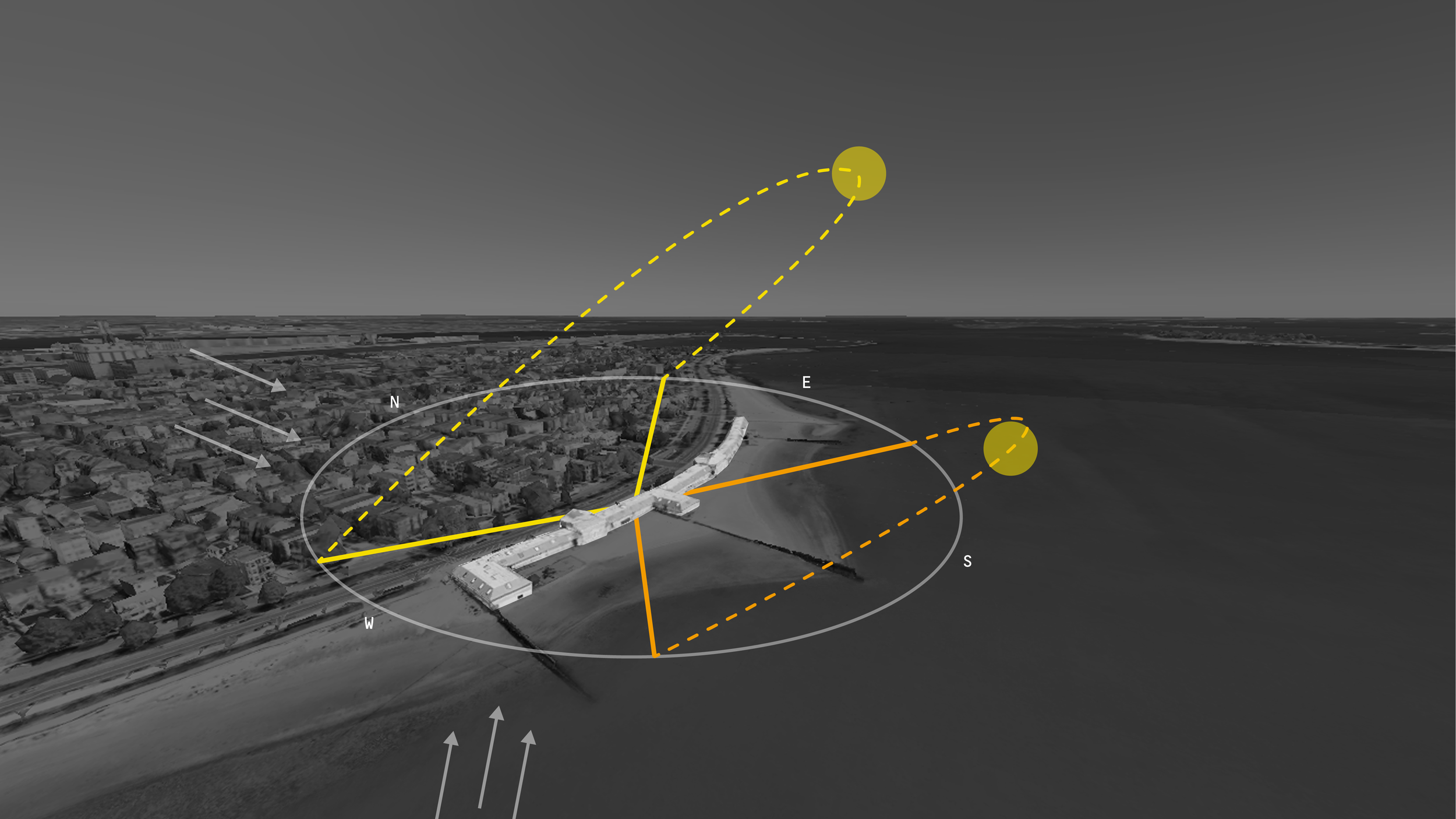When designing for the turn of the next century into the projected year of 2100, we must consider the adverse effects of climate change and how it will affect the future of the built environment. On top of climate-related catastrophes such as sea level rise, decrease in fresh water supply, and more intense and frequent heat waves, we must also pay acute attention to the secondhand effects- decrease in arable land for agriculture, decrease in job availability, increase in widespread poverty, and the imminent decrease in fossil fuel reliance. Cycles for Continuance aspires to reclaim water, the prospective agent of disaster and destruction, to a supportive resource for the local community by exploring mitigating strategies in this vulnerable, coast-adjacent site.
The project site, the historic 1931 Curley Community Center in South Boston, spans over a quarter mile long. The building is adapted to function as a living system, tackling 3 main issues within a cyclical program: community care, fresh water production, and sustainable alternatives in agricultural food production.
K Street Lobby
K Street - Converted to Greenhouse for Hydroponics
L Street Lobby - Community Garden
M Street - Desalination Plant












